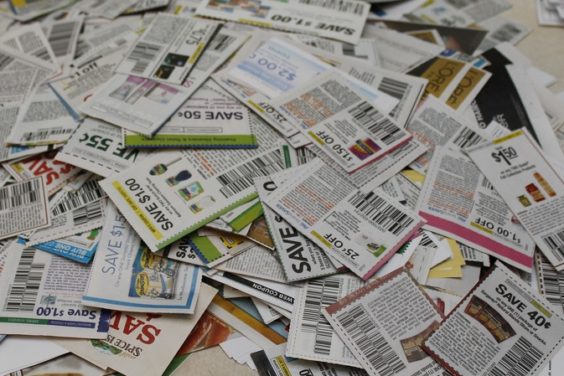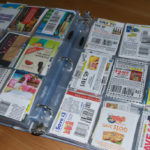
An insubstantial survey from a company you’ve never heard of has earned a surprising amount of media attention, from reporters who are beside themselves in amazement that, in this day and age, people like you are still using paper coupons.
“Americans can’t kick the habit of clipping paper coupons,” one news report declared. “Sunday morning newspaper coupon clipping sounds antiquated in this age of ‘e’ everything, but new research indicates it’s happening more often than you think,” another report added. “With seemingly the entire world going digital, it’s actually surprising that U.S. consumers appear to favor paper coupons over real ones. Is that really a fact?” a third report asked incredulously. (Paper coupons aren’t “real”?)
It turns out that, yes, paper coupons are still a thing. Antiquated? Perhaps. Surprising? Not to millions of coupon users, or to the entire coupon industry. But maybe it is, to reporters who don’t clip coupons, and assume that nobody else but their grandmother does, either.
The reports were all based on a survey conducted and promoted by CreditCards.com, a site that allows consumers to compare various credit card offers. About a thousand people were asked, “When redeeming coupons, which of these do you use most often?” A mere 3.5% said credit card-linked offers, 15% said coupons presented on a mobile phone, 17% said online discount codes, and the remaining 63% of apparently out-of-touch Luddites opted for paper coupons.
Creditcards.com seemed as surprised at the responses, as those who wrote about them were. “Despite all of the technology available to today’s consumers, Americans still prefer paper coupons,” the company said in announcing its findings.
To those who actually redeem paper coupons, and the multi-billion dollar industry involved in printing, distributing and processing them, the fact that paper coupons are still pretty popular hardly counts as news. According to Inmar’s most recent Promotion Industry Analysis, less than 15% of the 2.8 billion coupons redeemed in 2014 were electronic in some form. All the rest were printed on dead trees. Digital’s share is growing, but it still has an awfully long way to go before it overtakes paper.
So why were so many surprised at the survey’s results? It could be because digital seems cool, and cool is what gets all the attention. “You see Cartwheel, you see QR codes everywhere, and it creates the impression of a mobile oasis ahead, when the truth is, it’s a mirage,” marketing consultant and coupon trends expert Andrew Coleman from Rogue Two Marketing told Coupons in the News. “For all the sex appeal of digital/mobile/social, they are just flies on the tail of the lion.”
Digital adoption is indeed increasing as newspaper circulation declines, and maybe you find yourself using fewer paper coupons these days. But that hardly means paper is on the verge of extinction. While the younger generations in particular are more likely to seek out discounts on their phones, even CreditCards.com acknowledged that, according to its findings, 18-24 year olds still use paper coupons about twice as often as any other method.
“Dead trees aren’t dead when it comes to coupons,” CreditCards.com’s senior industry analyst Matt Schulz said in a statement. “Plenty of Americans are still opening their snail mail and reading the Sunday paper.”
Theories abound as to why many coupon users seem to prefer paper. Paper is easier to use, easier to redeem, easier to remember. But there may be a simpler explanation. “Why do people still use paper coupons?” Coleman asked. “Because that’s where the offers are. Shoppers are going to flock to the easiest sources to find coupons – Sunday newspapers, retail circulars, Coupons.com, etc. – because they are rational actors.”
For coupon issuers, digital coupons may be more efficient, easier to process and less susceptible to fraud. But they can’t achieve the reach and scale of printed coupons that are distributed in stores, stuck to products’ packaging, or delivered to your doorstep. Besides, there’s an entire industry built around paper coupons – printers and processors who are completely reliant on a constant flow of paper coupons, not to mention newspapers that are increasingly desperate for the ad revenue that coupon inserts provide. Together, they have little incentive to challenge the popularity of paper any time soon. “For all the digital activity, for all the mobile variety, for all the sexy options proliferating out there as pilots, Big Coupon is a well-established and surprisingly enduring beast,” Coleman said.
Ironically enough, the CreditCards.com survey was designed to promote card-linked offers – you know, the option that came in dead last. No wonder the company was surprised by the findings. “These can be great benefits people don’t even know they have,” Schulz said.
Ultimately, the media that ate up the story idea that CreditCards.com pitched – “get this, people still use paper coupons!” – ended up giving a lot of free press to CreditCards.com. So if you had never heard of it before, you have now. And in the end, surprising survey results or not, maybe that was the whole point.











wher can prinyer uk coupons
Digital coupons are a roll of the dice, sometimes they come off when they should, most times they don’t. I’d rather have a piece of paper with the discount and watch the cashier scan it than roll the dice.
Not everyone in the US has a smartphone. I’d love to know how much on average the average couponer spent on their phone and wireless service for it…seems that they are paying lots o’ dough for phones and service (mine is $10 a month, and the phone was free).